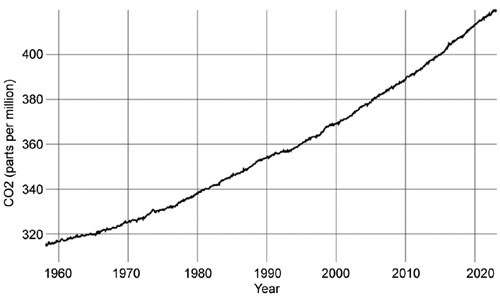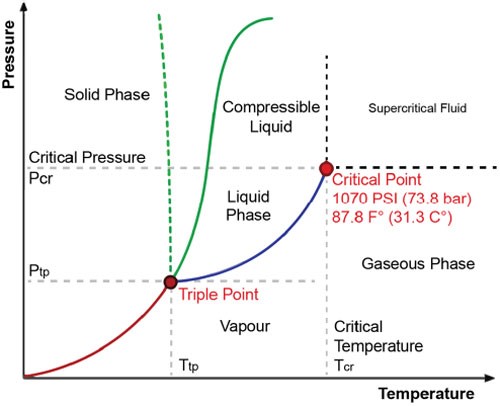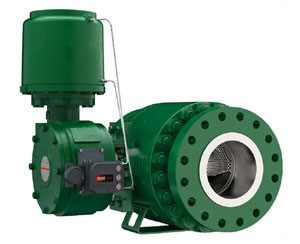As climate change progresses, reducing greenhouse gas (GHG) emissions, particularly carbon dioxide (CO2), is critical. Spurred by government subsidies and mandates, CO2 sequestration projects are underway across the globe. My December 2023 Automation.com article, titled Control Valve Selection for Supercritical Carbon Dioxide Pipelines and Injection Systems, discusses the unique considerations involved in selecting control valves for CO2 transportation and injection.
Carbon capture to reduce emissions
Global GHG emissions have been growing steadily for decades, elevating average temperatures and disrupting weather patterns. Governments are taking actions to reduce these emissions, including the 2021 U.S. Bipartisan Infrastructure Law, which provisioned $3.7 billion towards carbon removal efforts.

Atmospheric CO2 has risen 47%25 since the industrial age and 11%25 since the year 2000, increasing the average winter temperature in the United States by 3 F° since 1896. (Figure courtesy of Climate.nasa.gov)
Carbon can be captured from ambient air or industry emissions, and it can then be used as-is in applications such as refrigeration, converted to useful materials such as plastics, or injected underground and stored indefinitely. In each case, extensive pipeline infrastructure will be necessary to transport CO2 to wherever it is used or stored.
Some of these pipelines already exist in the U.S., but they will need to be expanded by an order of magnitude to achieve the country’s emission goals. Currently, about 35 commercial facilities apply carbon capture, but over 300 projects are already in various stages of planning.
Unique transport challenges
CO2 is often compressed under high temperature and pressure during transport, creating a supercritical fluid.

Above the critical point at 1070 PSI (73.8 bar) and 87.8 F° (31.3 C°), CO2 is no longer a liquid or a gas, but becomes a compressible dense phase fluid with the properties of both a liquid and a gas.
In a supercritical fluid state, CO2 has the density of a liquid but the viscosity of a gas, so it transports very efficiently in pipelines, with much reduced pressure loss, but CO2 transport has its challenges as well. Even trace amounts of water in the gas will create carbonic acid, which attacks the piping. Water can also form hydrates, similar to ice crystals, when pressure is reduced, impeding flow and creating plugging problems.
In addition, pressure drops can cause a sudden reversion to the vapor phase, resulting in explosive decompression that can blow apart control valve elastomers. Underground carbon sequestration includes the aforementioned challenges, and it adds to them the possibility of two- or even three-phase flow, depending on the pressure.
Specialized control valve specification
Supercritical conditions and multiphase flow disrupt standard flow and sizing calculations, so specialized knowledge and modeling programs are required to engineer valves for pressurized CO2 applications.
Material selection must be considered carefully, as even trace amounts of water can react with CO2 and damage standard valve materials. Many elastomers are susceptible to explosive decompression, so non-elastomer seals are preferred in most cases.
Typical valve designs
Full-ported throttling ball valves are often used for their ability to handle high pressures and to minimize any pressure drop when the valve is fully open. If an attenuator is required, it must be designed for either liquid or vapor phase fluids depending on the application.

A 900-pound full-bore throttling valve (Fisher™ V280 shown) is commonly used in CO2 pipeline applications. Attenuators for liquid and vapor service may be required for applications with high pressure drops.
During low flow conditions, vapor can suddenly reverse into compressors, only to slam forward moments later, causing severe damage. Anti-surge valves prevent this by instantly redirecting outlet flow back to the compressor inlet when necessary. These valves are usually very large and require specialized components to provide extremely fast and accurate response.
Partner with an expert
Relatively few vendors have experience in high-pressure CO2 applications, but they do exist. Understanding normal and upset process conditions and partnering with a knowledgeable vendor are the first steps to successful valve selection, leading to long-term reliability, safety, and cost savings.
Are you looking for the right valve service provider? Check out Emerson’s service network, which includes Emerson service centers and Emerson Accredited Service Providers. Find your local service provider here.